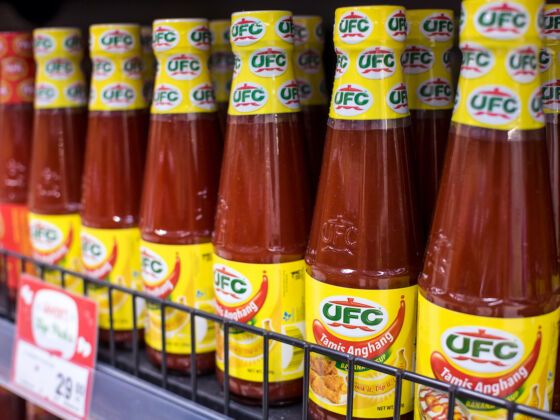Hot-dog loving Americans might think they have a monopoly on the ketchup market, but there’s another nation with just as much of an affinity for ketchup as we do: The Philippines. While American ketchup is based around tomatoes, the Filipino version, true its the name, is made almost entirely from bananas.
Invented by a humanitarian and chemist during World War II, Filipino banana ketchup is now a staple at the Filipino dinner table that’s enjoyed on silog (rice, fried egg and fried Spam), fried chicken, and tortang talong (eggplant omelet), among other dishes.


